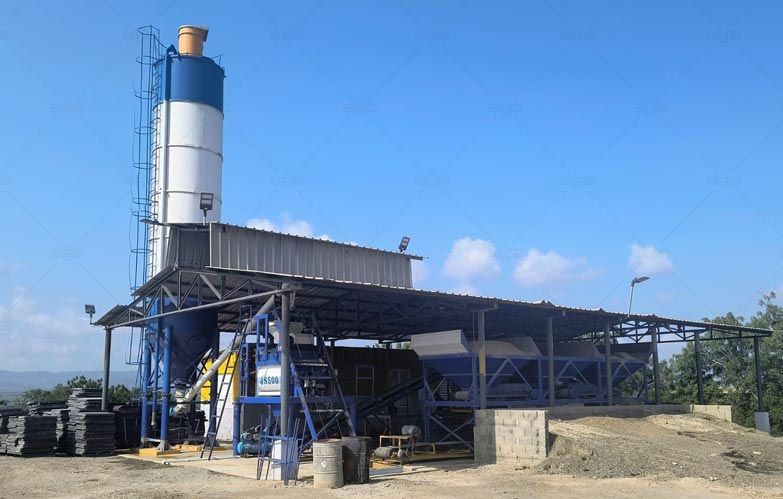How Does the Location of Equipment Installation Affect the Choice of Concrete Plants?
- Aimix maquina

- 24 ene
- 3 Min. de lectura
The installation location of a concrete plant significantly influences the selection process, as it determines factors like transportation, setup, and operational efficiency. Whether you're considering a mini concrete plant or a large-scale stationary plant, understanding how location impacts the choice can help optimize costs and project outcomes.
Factors to Consider for Equipment Installation Location
Accessibility and Transportation
The proximity of the installation site to raw material sources and construction locations is crucial. Easy access reduces transportation costs and ensures timely concrete delivery.
Site Conditions
The physical characteristics of the site, such as terrain, available space, and environmental factors, play a key role in determining the type of concrete plant(planta de hormigón precio) suitable for the location.
Project Duration
For temporary or short-term projects, portable or mini concrete plants are often more practical, while long-term projects may justify the installation of larger, stationary plants.

Types of Concrete Plants and Their Suitability for Different Locations
Stationary Concrete Plants
Best for Urban or Large-Scale Projects
Stationary concrete plants are ideal for projects requiring high output and consistent quality. However, they need a stable, permanent site for installation.
Advantages:
High production capacity.
Cost-effective for large-scale operations.
Challenges:
Higher concrete plant price.
Unsuitable for remote or temporary locations due to limited mobility.
Mobile Concrete Plants
Perfect for Remote or Temporary Locations
Mobile concrete plants are designed for flexibility and quick relocation, making them an excellent choice for projects in remote or changing locations.
Advantages:
Easy to transport and set up.
Reduces the need for long-distance concrete transportation.
Challenges:
Lower production capacity compared to stationary plants.
Mini Concrete Plants
Ideal for Small-Space or Low-Demand Locations
Mini concrete plants(mini planta de hormigon) are compact and affordable, making them suitable for small-scale projects or sites with limited space.
Advantages:
Lower concrete plant price.
Space-saving design and easy installation.
Challenges:
Limited output capacity.
How Location Impacts Concrete Plant Costs
Transportation Costs
The distance between the plant and the construction site directly affects transportation costs. Installing a plant closer to the site can significantly reduce these expenses.
Installation and Setup Costs
Difficult terrain or remote locations may require additional resources for plant setup, impacting overall costs. Mini concrete plants often have lower setup costs, making them more viable in such scenarios.
Maintenance and Operations
Remote locations may face challenges in accessing maintenance services or spare parts, increasing operational costs over time. Mobile and mini plants are easier to maintain in such conditions.
Environmental Considerations for Plant Location
Noise and Dust Control
Urban areas often have strict regulations on noise and dust emissions. Choosing a plant with advanced environmental controls is essential for compliance.
Water and Waste Management
Concrete plants require water for operation, and proper waste disposal systems are necessary. Locations with limited water supply may benefit from plants with recycling systems.
Optimizing Plant Choice Based on Location
Urban Locations
For urban projects, stationary plants with advanced environmental controls are ideal. However, mini concrete plants can also be used for smaller-scale urban developments.
Remote or Rural Locations
Mobile concrete plants are the best choice for remote areas due to their portability and ease of setup. Mini concrete plants are also suitable for projects with low concrete demand.
Temporary Sites
For short-term projects, mobile or mini concrete plants provide the flexibility needed to adapt to changing site requirements.
Conclusion
The location of equipment installation plays a crucial role in selecting the right concrete plant. Factors like accessibility, site conditions, and project duration must be carefully evaluated to ensure cost-effectiveness and operational efficiency. While stationary plants are ideal for large-scale, long-term projects, mobile and mini concrete plants offer flexibility and affordability for remote or temporary sites. By aligning the choice of plant with location-specific needs, construction professionals can optimize costs, enhance productivity, and achieve project success.



Comentarios